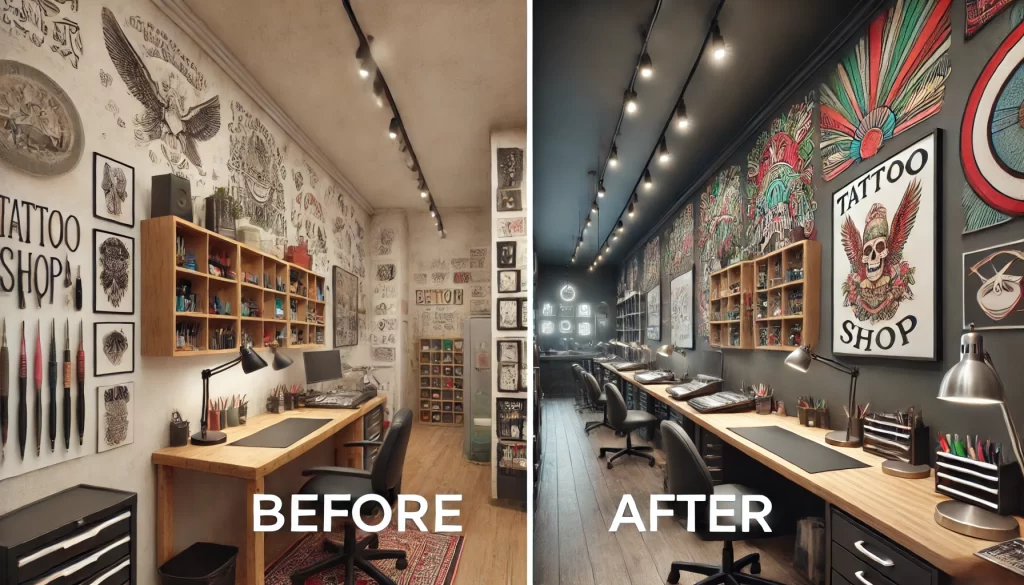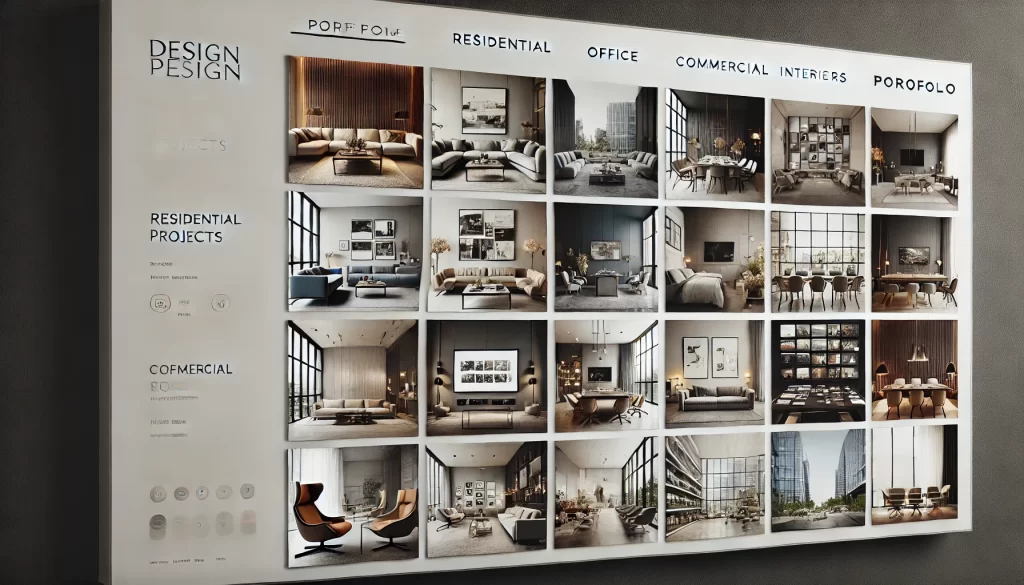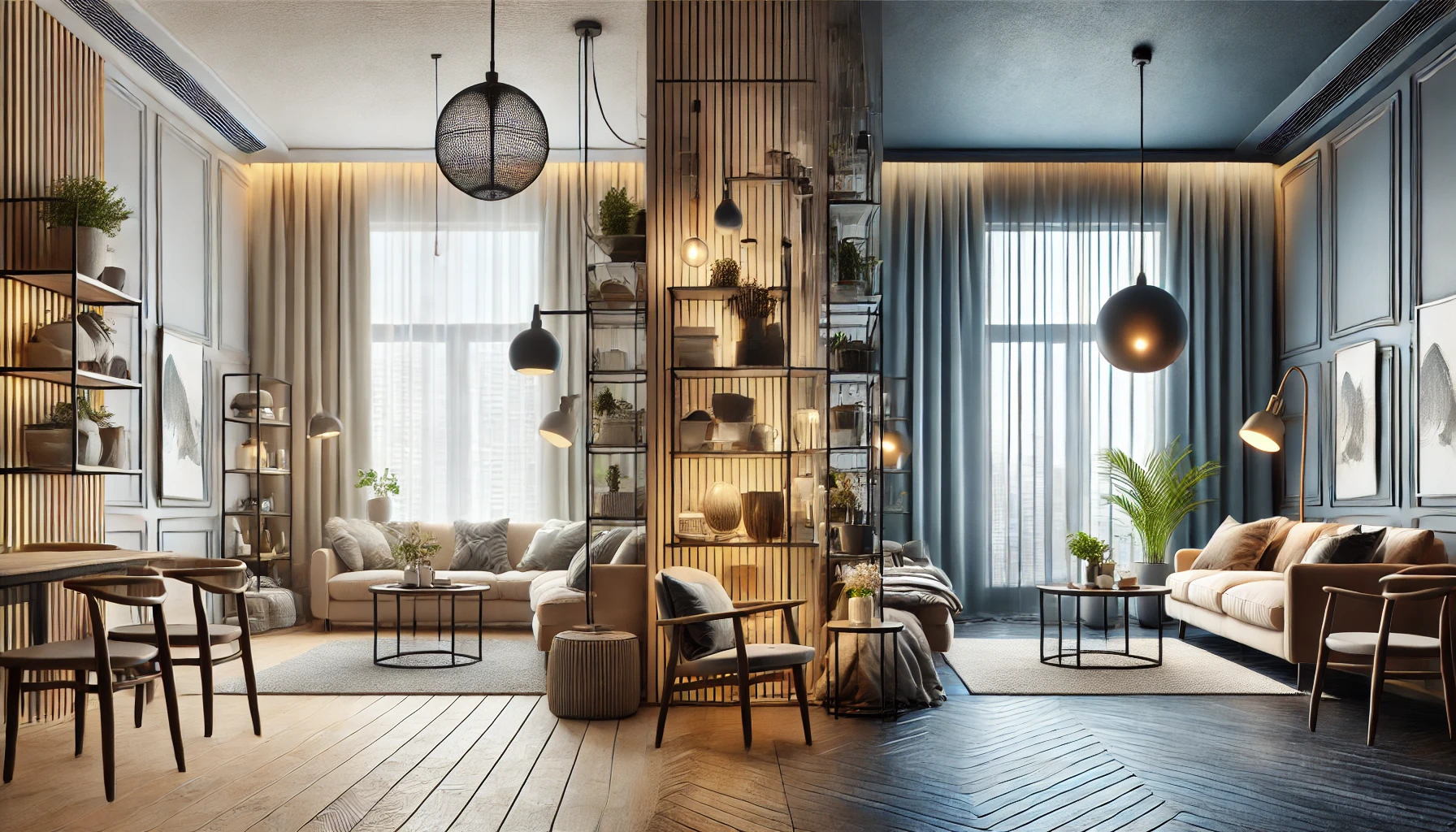The Power of a Strong Interior Design Portfolio
As an interior designer, one of the most powerful tools you have at your disposal is a well-crafted portfolio. In today’s competitive market, a strong portfolio isn’t just a luxury, it’s a necessity for attracting clients and growing your business. Your portfolio is a direct representation of your skills, creativity, and design philosophy. It showcases your best work and allows potential clients to see the value you can bring to their projects.
This blog will guide you on how to build an impressive portfolio that highlights your design expertise and attracts clients. We’ll cover the importance of an online portfolio, essential elements to include, and how to ensure it stands out in a crowded marketplace.

Why an Interior Design Portfolio Website is a Must-Have
In the digital age, your online presence is key to success. An interior design portfolio website acts as both your business card and your showroom, allowing clients to browse your work and assess your skills from the comfort of their homes or offices. Here’s why building an effective portfolio website is essential for interior designers:
The Importance of Showcasing Your Work
A portfolio website serves as a visual proof of your capabilities. It allows potential clients to see firsthand the quality of your work, whether they’re looking for residential, commercial, or office design. Having a curated collection of your best projects gives you a competitive edge in the market and can help clients envision how you might bring their ideas to life.
Establishing Credibility and Trust
For many clients, your portfolio website will be their first interaction with your business. A professional, well-organized site establishes credibility, demonstrating that you take your work seriously and are committed to delivering top-quality design. Trust is a major factor in client decisions, and an online portfolio is the perfect tool to build that trust early on.
Attracting a Broader Audience
A strong online portfolio expands your reach beyond local clients. It allows you to tap into a global audience, increasing the chances of landing more projects and growing your brand. Clients from different geographical areas or industries can easily view your work, contact you, and hire you without the limitations of face-to-face interactions.
Suggested Posts:
- Top Resources for Interior Design Inspiration
- Importance of Web Presence for Interior Designers
- Best Practices for Website Interior Design Business Goals
Essential Elements of an Effective Interior Design Portfolio
Now that we understand the importance of an online portfolio, let’s dive into the key elements that make a portfolio website effective in showcasing your work and attracting clients. These elements are crucial for ensuring your website not only highlights your best work but also engages potential clients and converts them into leads.
High-Quality Work Samples
The backbone of your portfolio is the work itself. Choose your best design projects to showcase, focusing on a diverse range of styles and spaces that demonstrate your versatility. Include high-quality images of each project whether it’s a before-and-after photo, mood board, or finished space. Clear, professional photos speak volumes about your skills.
Project Details and Descriptions
Alongside your photos, provide brief descriptions of each project. Share details about the design process, challenges faced, solutions you implemented, and the impact of your work on the space. This gives clients insight into your problem-solving abilities and the thoughtfulness behind each design. It’s important to show that your work isn’t just about aesthetics, but also functionality and creativity.
Design Inspiration and Trends
Show that you stay current with the latest design trends and innovations. Include sections or blog posts that highlight design inspiration, your design philosophy, or how you approach various design challenges. This demonstrates your expertise and positions you as an interior designer who is in tune with the latest trends, making your portfolio more relevant and exciting.

How to Organize Your Interior Design Portfolio
When it comes to organizing your portfolio, structure is key. A well-organized portfolio is easy to navigate, allowing potential clients to quickly find the information they’re looking for. Below are the key organizational elements for a streamlined, user-friendly portfolio website:
Categorize Your Projects by Type
Organize your portfolio by project type residential, commercial, office, hospitality, etc. This makes it easier for potential clients to browse relevant projects based on their needs. If you’ve worked on a variety of design types, this categorization will highlight your versatility and attract clients from different sectors.
Client Testimonials and Reviews
Adding client testimonials to your portfolio can make a huge difference in attracting new clients. Positive reviews from satisfied clients build trust and validate your expertise. Consider creating a dedicated section for client feedback or incorporating testimonials into individual project pages to add credibility and reinforce the quality of your work.
Including Design Process and Philosophy
Show your potential clients how you work by describing your design process. Include the stages of a project initial consultation, concept development, implementation, and final reveal. This transparency helps clients understand what to expect when working with you and reassures them that you have a clear, organized approach.
Suggested Posts:
- Creating an Effective Interior Design Website
- Design Home Interior for Style and Functionality
- Interior Design Guide for Industries’ Online Presence
Optimizing Your Portfolio Website for Client Acquisition
Your portfolio isn’t just a showcase of your work, it’s a powerful marketing tool that can directly influence client acquisition. To make the most out of your portfolio website, optimize it for search engines, user engagement, and lead conversion.
Search Engine Optimization (SEO)
To ensure that potential clients find your portfolio website, focus on SEO. Include relevant keywords in your project descriptions, portfolio section, and image alt text. Keywords like “interior design portfolio websites” or “interior design website examples” help search engines index your website, making it easier for potential clients to find you when they search for design services.
Responsive Design for Mobile Users
Your portfolio should look great on any device. With mobile browsing becoming the norm, a responsive website design is essential. Ensure that your website adapts to different screen sizes, making it easy for clients to browse your portfolio on both desktops and mobile devices.
Clear Calls to Action (CTA)
A well-designed portfolio website should encourage potential clients to take action. Include clear calls to action, such as “Contact Me,” “Schedule a Consultation,” or “Get a Quote,” on each page. These CTAs should stand out but not overwhelm the user experience. Make it easy for visitors to take the next step toward hiring you.
Platform Choices for Creating Your Portfolio Website
Building a portfolio website doesn’t require advanced technical skills, thanks to numerous platforms that cater to interior designers. Here are a few options to consider when choosing the best platform for your interior design portfolio:
Best Website Builders for Interior Designers
For designers without web development skills, website builders like WordPress, Wix, and Squarespace offer easy-to-use platforms with customizable templates. These platforms allow you to build a professional-looking portfolio quickly while offering flexibility for design, image galleries, and SEO optimization.
Custom Portfolio Websites
If you have the budget or the technical skills, a custom-designed portfolio website allows for a fully personalized look that reflects your brand’s unique style. A custom site can be tailored to your specific needs, providing a more bespoke user experience.
Key Takeaways
- A strong portfolio is crucial for interior designers, as it showcases your skills and establishes credibility.
- Organize your portfolio by project type, include high-quality images, and provide project descriptions to engage potential clients.
- Optimize your portfolio website for SEO, mobile responsiveness, and clear calls to action to convert visitors into leads.
- Consider using platforms like WordPress, Wix, or Squarespace to build an easy-to-manage portfolio website that reflects your brand and attracts clients.
FAQs
What should an interior designer’s portfolio include?
An interior designer’s portfolio should include high-quality images of past projects, project descriptions, client testimonials, and an easy-to-navigate layout. A well-organized site with a clear design process and relevant categories will make a lasting impact.
How can I make my portfolio stand out from others?
Highlight your unique design style, showcase a diverse range of projects, and use a clean, professional design for your website. Including testimonials and showing your design process also helps make your portfolio more engaging and trustworthy.
How do I improve my portfolio’s visibility online?
Focus on SEO by incorporating relevant keywords, optimizing your images, and ensuring your website is mobile-friendly. Having a well-optimized portfolio will make it easier for potential clients to find your work through search engines.
